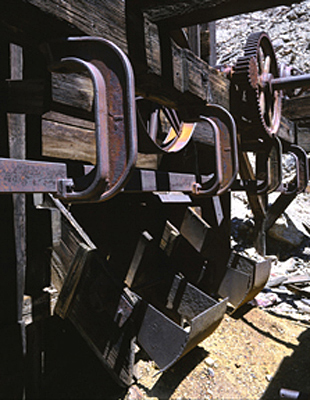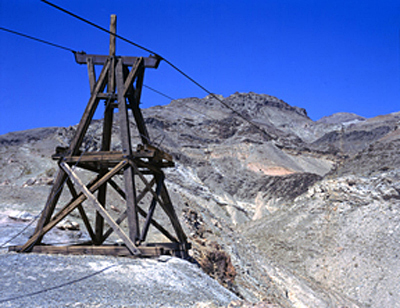 DEVA SITE SURVEY & RESEARCH
DEVA SITE SURVEY & RESEARCH
 DEVA SITE SURVEY & RESEARCH
DEVA SITE SURVEY & RESEARCH
The three sites were extensively surveyed, with measurements of artifacts, machinery, and some structures taken in many cases. With the help of contemporary texts and treatises in mining practice, ore dressing, and gold processing, work / materials flow charts were made, and most technological features were identified and explained. Missing components were also identified. Sketches, drawings, and maps were made for illustrative purposes, to demonstrate spatial relationships within processes and between machines. Extensive research of primary and secondary historic documents such as maps, newspapers, technical books, mining journals, and legal papers was carried out to develop the individual histories of each site. Further research was conducted outside the park to prepare a contextual comparison of the sites within a regional and statewide framework. Many small scale gold mining sites were visited throughout the Mojave Desert, south of DEVA, and a trip to the Bancroft Library in Berkeley was made to drawn upon a larger body of historic mining records.
LEFT: Ore bin and loading chutes at the upper tram
terminal of the Keane Wonder Mine (1907). Ore buckets were automatically
loaded as they passed beneath these chutes and were transported
one mile down to the mill site at the foot of the Funeral Mts.
This remarkable aerial tramway consists of twelve support towers,
BELOW, and is still intact, thanks to DEVA stabilization
efforts in the 1990s. This tramway was entirely gravity operated,
and its momentum was captured to drive a preliminary jaw crusher
located at the upper terminal.
(HAER photographs by G. Archimede)
